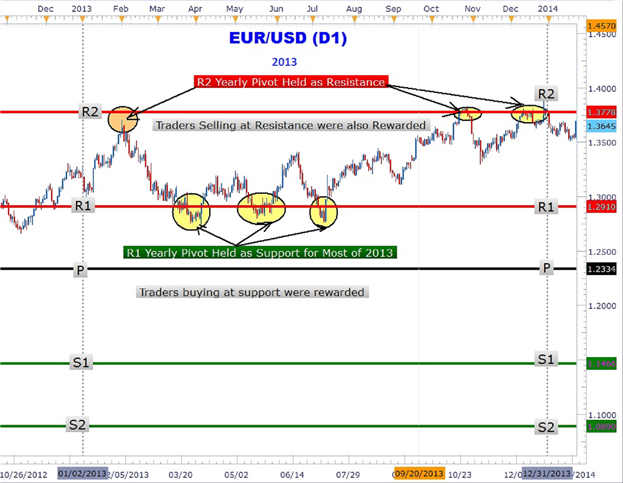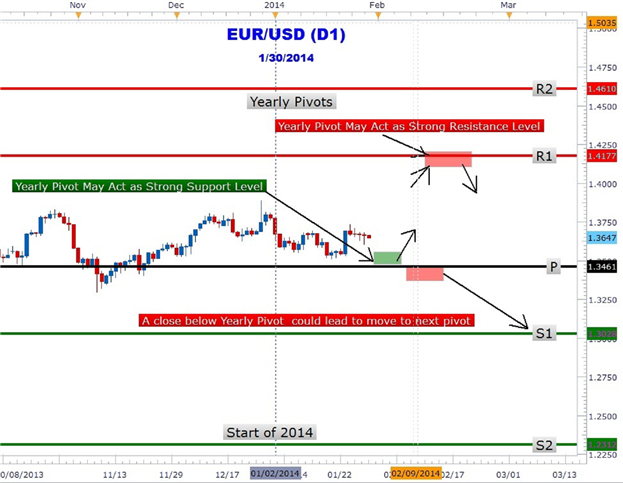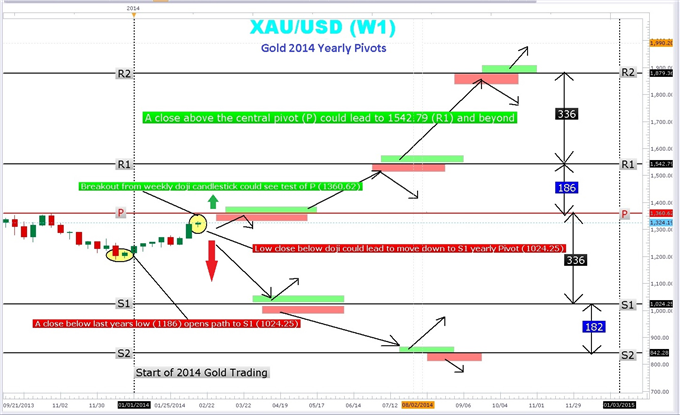This is what I found -
Forum on trading, automated trading systems and testing trading strategies
Discussion of article "MQL5 for Newbies: Guide to Using Technical Indicators in Expert Advisors"
Sergey Golubev, 2014.02.27 16:46
Introduction to Technical Indicators (based on dailyfx aticle)
Trend Following
Trend following indicators were created to help traders trade currency
pairs that are trending up or trending down. We have all heard the
phrase “the trend is your friend.” These indicators can help point out
the direction of the trend and can tell us if a trend actually exists.
Moving Averages
A Moving Average (MA for short) is a technical tool that averages a
currency pair’s price over a period of time. The smoothing effect this
has on the chart helps give a clearer indication on what direction the
pair is moving… either up, down, or sideways. There are a variety of
moving averages to choose from. Simple Moving Averages and Exponential
Moving Averages are by far the most popular.
Ichimoku
Ichimoku is a complicated looking trend assistant that turns out to be
much simpler than it initially appears. This Japanese indicator was
created to be a standalone indicator that shows current trends, displays
support/resistance levels, and indicates when a trend has likely
reversed. Ichimoku roughly translates to “one glance” since it is meant
to be a quick way to see how price is behaving on a chart.
ADX
The Average Direction Index takes a different method when it comes to analyzing trends. It won’t tell you whether price is trending up or down, but it will tell you if price is trending or is ranging. This makes it the perfect filter for either a range or trend strategy by making sure you are trading based on current market conditions.
Oscillators
Oscillators give traders an idea of how momentum is developing on a
specific currency pair. When price treks higher, oscillators will move
higher. When price drops lower, oscillators will move lower. Whenever
oscillators reach an extreme level, it might be time to look for price
to turn back around to the mean. However, just because an oscillator
reaches “Overbought” or “Oversold” levels doesn’t mean we should try to
call a top or a bottom. Oscillators can stay at extreme levels for a
long time, so we need to wait for a valid sign before trading.
RSI
The Relative Strength Index is arguably the most popular oscillator out
there. A big component of its formula is the ratio between the average
gain and average loss over the last 14 periods. The RSI is bound between
0 – 100 and is considered overbought above 70 and oversold when below
30. Traders generally look to sell when 70 is crossed from above and
look to buy when 30 is crossed from below.
Stochastics
Stochastics offer traders a different approach to calculate price
oscillations by tracking how far the current price is from the lowest
low of the last X number of periods. This distance is then divided by
the difference between the high and low price during the same number of
periods. The line created, %K, is then used to create a moving average,
%D, that is placed directly on top of the %K. The result is two lines
moving between 0-100 with overbought and oversold levels at 80 and 20.
Traders can wait for the two lines to crosses while in overbought or
oversold territories or they can look for divergence between the
stochastic and the actual price before placing a trade.
CCI
The Commodity Channel Index is different than many oscillators in that
there is no limit to how high or how low it can go. It uses 0 as a
centerline with overbought and oversold levels starting at +100 and
-100. Traders look to sell breaks below +100 and buy breaks above -100.
To see some real examples of the CCI in action,
MACD
The Moving Average Convergence/Divergence tracks the difference between two EMA lines, the 12 EMA and 26 EMA. The difference between the two EMAs is then drawn on a sub-chart (called the MACD line) with a 9 EMA drawn directly on top of it (called the Signal line). Traders then look to buy when the MACD line crosses above the signal line and look to sell when the MACD line crosses below the signal line. There are also opportunities to trade divergence between the MACD and price.
Volatility
Volatility measures how large the upswings and downswings are for a
particular currency pair. When a currency’s price fluctuates wildly up
and down it is said to have high volatility. Whereas a currency pair
that does not fluctuate as much is said to have low volatility. It’s
important to note how volatile a currency pair is before opening a
trade, so we can take that into consideration with picking our trade
size and stop and limit levels.
Bollinger Bands®
Bollinger Bands print 3 lines directly on top of the price chart. The
middle ‘band’ is a 20-period simple moving average with an upper and low
‘band’ that are drawn 2 standard deviations above and below the 20 MA.
This means the more volatile the pair is, the wider the outer bands will
become, giving the Bollinger Bands the ability to be used universally
across currency pairs no matter how they behave. The wider the bands,
the more volatile the pair. Most common uses for Bollinger Bands are
trying to trade double tops/bottoms that hit an upper or lower band or
looking to trade bounces off an outer band in the direction of the
overall trend.
Bollinger Bands® is a registered trademark of John Bollinger.
ATR
The Average True Range tells us the average distance between the high
and low price over the last X number of bars (typically 14). This
indicator is presented in pips where the higher the ATR gets, the more
volatile the pair, and vice versa. This makes it a perfect tool to
measure volatility and also can be a huge help when selecting where we
should set our stop losses.
Support/Resistance
Pivot Points
Being one of the older technical indicators, Pivot Points are one of
the most widely used in all markets including equities, commodities, and
Forex. They are created using a formula composed of high, low and close
prices for the previous period. There is a central pivot line and
subsequent support lines and resistance lines surrounding it. Traders
use these lines as potential support and resistance levels, levels that
price might have a difficult time breaking through.
Donchian Channels
Price channels or Donchian Channels are lines above and below recent
price action that show the high and low prices over an extended period
of time These lines can then act as support or resistance if price comes
into contact with them again. A common use for Donchian channels is
trading a break of a line in the direction of the overall trend. This
strategy was made famous by Richard Dennis’ Turtle Traders where Dennis
took everyday people and was able to successfully teach them how to
trade futures based on price channels.
Forum on trading, automated trading systems and testing trading strategies
Indicators: Pivot Lines TimeZone
Sergey Golubev, 2014.01.30 11:06
How to Use Forex Yearly Pivot Points to Forecast Euro Targets (based on dailyfx article)
- Pivot points is a popular and easy way that traders can identify potential support and resistance
- Pivot points are based on a mathematical calculation that uses the previous high, low and close of a specified period; weekly, daily, monthly, yearly
- Yearly pivots can forecast maximum and minimum price extremes for the coming year as well as areas where price can change direction.
While most traders are familiar with daily, weekly, and even monthly pivots which fit their type of trading, yearly pivots can also be used to forecast future potential support and resistance areas. Buying at or near a significant area of support and selling at a key area of resistance is the main focus of any trader no matter what the market or the duration traded. Yearly pivots can be monitored for those key trading opportunities.

As you can clearly see in the Euro chart above, forex yearly pivots have been plotted. Notice how the Euro rallied up to the R2 pivot and turned around sharply falling over 600 pips in February. Another significant area that can be easily seen showing the power of
yearly pivots is the triple touch of the R1 yearly pivot at 1.2910. The
third and final touch led to over a 600-pip rally back to the R2 yearly
pivot to close out 2013 up over 4%.

Could forex yearly pivots show traders the next move in the Euro? In the
chart above the 2014 yearly pivots are plotted on the EURUSD chart. The
year is just getting started and the great thing about yearly pivots is
only having to draw them once a year! EURUSD is trapped between the
central pivot at 1.3461 and R1 at 1.4177. As at the time of this
writing, the Euro has not tested either pivot. However, forex traders
may be waiting for a move down to the central pivot (1.3461) for a move
back toward the R1 (1.4177) yearly pivot resistance.
Alternative scenario is for the Euro to make an immediate run for it up
to the R1 level. At R1 pivot resistance, traders may look to take profit
on their longs and/or short the Euro at this level. However, a close
above R1 could lead to a move higher to the R2 pivot (1.4610). Traders
should also consider the possibility of a close below the central pivot
that could lead to a prolonged down push to the S1 (1.3028) level.
Forex traders who scalpers, position or swing traders can make use of
yearly pivots to locate key areas of support and resistance. Look for
future articles on other currency pairs that lay out the yearly pivot
‘landscape’ to help you navigate the forex market.
Forum on trading, automated trading systems and testing trading strategies
Sergey Golubev, 2014.02.22 07:22
How to Trade Gold Yearly Pivot Points (adapted from dailyfx article)
- Commodity pit traders have used pivot points for decades to determine potential support and resistance areas.
- Gold yearly pivot points from 2013 forecasted significant turning points
- Gold is approaching the 2014 central yearly pivot point at 1360.82
The year 2013 was not very kind to the shiny metal. Gold plunged 27% or just over $450/oz. in one of the biggest declines in many years. However, after hitting a three year low of 1178.86 back in December 2013, gold has managed to crawl back higher in 2014.Yearly pivots marked gold's decline with pinpoint accuracy.
Gold 2013 Yearly Pivots :

The sudden and severe $141/oz. drop in gold in the beginning of 2013
caught many gold traders off guard. However, traders who watched gold
yearly pivots knew ahead of time that a close below the central pivot
(P) at $1661.75/oz.
Notice in the chart above how price hugged the central pivot red line.
The close below the yearly central pivot marked the beginning of a
year-long decline to 3-year lows.
Even after reaching a low of 1208, the subsequent gold rally in July was
stopped dead in its tracks at the S2 yearly pivot at $1392.79/oz. Gold
went on to make the low of the year at 1179.86. Yearly pivots were
useful for determining the beginning of the decline as well as locating
areas to re-enter or add more to a position. You may now be wondering
what the 2014 yearly pivots have in store for gold.
Gold 2014 Yearly Pivots :

Gold Yearly Pivot Trading Plan
Gold starts 2014 higher than where it left off in 2013. Crossing above
the psychologically important $1300 level, gold is a long way from the
lofty highs in the $1900 area. The first major yearly pivot hurdle is
just $40.00 away at the central yearly pivot at 1360.82. This was also
the highs of October 2013. Pivot points often act as magnets “pulling”
price up or down to the nearest pivot.
The current weekly Japanese candlestick pattern is an indecision
doji/spinning top. This gives us a “fork in the road” or decision point;
price could break higher or lower from this point and continue to trend
in the breakout direction. A new candle is due out next Monday and if
it can break above the 1332 high of the doji candle could lead to an
explosive move toward the R1 pivot and beyond. Moves above the central
pivot are regarded as bullish.
On the other hand, a break below 1307.26 low of the weekly doji candle
opens move toward the lows of 2013 in the 1186 area and a test of the S1
yearly pivot at 1024.25. Remember that yearly pivots represent
potential support and resistance. Using the pivot point calculation on
the high low and close of 2013, these levels can be created. Yearly
pivot levels can help traders determine price targets for taking profit
as well as entry and stop areas.
Some more :
Forum on trading, automated trading systems and testing trading strategies
Something Interesting in Financial Video July 2013
Sergey Golubev, 2013.07.01 12:56
How to use Camarilla PivotsWarren Buffet once said, Price is what you pay, but Value is what you get. Professional traders understand that we can find great value on our trades by understanding support and resistance. There are multiple ways to identify support and resistance price levels. Many traders turn to pivot points to identify safe price levels to enter and exit our traders. You will be able to find multiple forms of pivot points; however, we believe that camarilla pivots are the best.
Just to remind - we are having few related indicators in Metatrader 5 CodeBase:
Forum on trading, automated trading systems and testing trading strategies
Something Interesting in Financial Video July 2016
Sergey Golubev, 2016.07.06 10:45
Forex Pivot Points. How to use them effectively
A pivot point is a measurement of the previous price action, the most common pivot point is the daily pivot point. These
points will measure price action one set level to another set level,
the pivot points will give you a series of measurements in between those
two levels.
Traders refer to pivot points as reference points,
the pivot point indicator will give you a central pivot level and 3
resistance levels above the central mark, the indicator will also
provide 3 support levels below the central mark.
If the price action
falls below the central point, this is referred to as the buying zone –
from this we know that traders will be looking at these levels based on
past performance whether that being daily pivots, weekly pivots or
monthly to gauge how fair any specific pair had moved.
Vice versa for
the pair going above the marked central pivot level, this is referred
to as the selling zone and traders will looking at the marked out pivot
points to sell into.
Forum on trading, automated trading systems and testing trading strategies
Something Interesting in Financial Video July 2016
Sergey Golubev, 2016.07.06 10:54
Pivot Point Basics First Entry - How i time my first daytrade of the day using pivot points and other indicators part 1 of 2 parts
Forum on trading, automated trading systems and testing trading strategies
Something Interesting in Financial Video July 2016
Sergey Golubev, 2016.07.06 10:57
Pivot Point Basics First Entry Part 2- Free trading apps
- Over 8,000 signals for copying
- Economic news for exploring financial markets
You agree to website policy and terms of use
What does pivot mean in the context of forex trading?